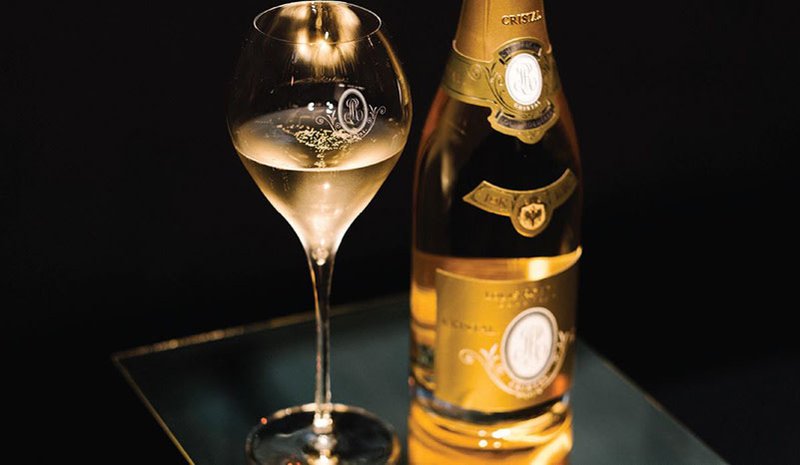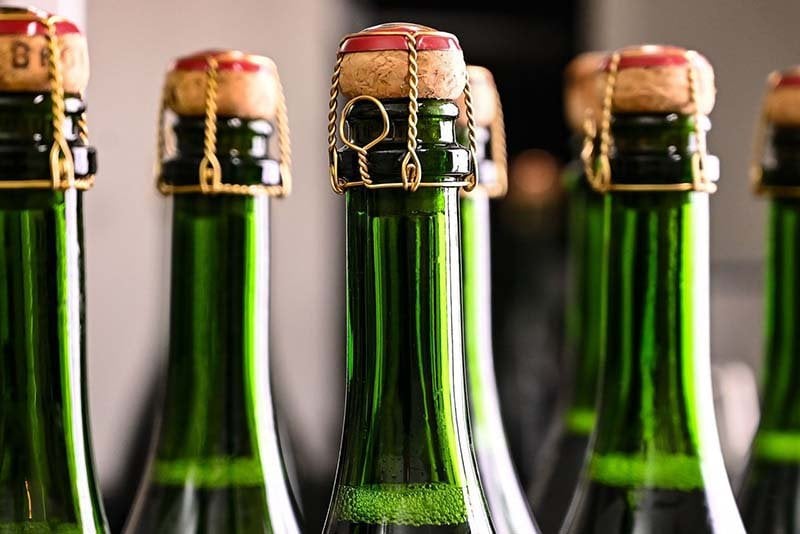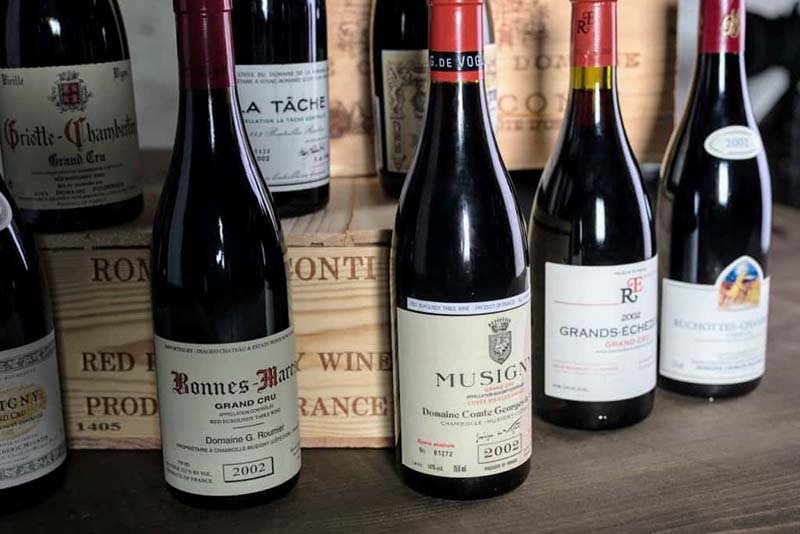11 Exciting Wine Investing Trends to Look Out For in 2025
Wine is one of the best alternative assets to diversify your investment portfolio and reduce risk. Your lovely Super Tuscan Italian wine or Chateau Lafite Rothschild could potentially bring you a handsome profit!
However, to ensure a successful wine portfolio, all savvy investors have to keep up with the latest wine investing trends.
In this article, we’ll cover 11 significant wine investing trends, the advantages of investing in wine, and how Vinovest can help you build a fine wine portfolio.
Further reading
- Curious about investing in wine? Here's Everything You Need to Know!
- Compare Investing in Stocks Vs. Wines and discover their pros and cons.
11 Wine Investing Trends to Watch in 2024
Here are the current wine investing trends you should be aware of:
- Champagne Leads as the Most Attractive Wine Investment
- Champagne Shortage and Price Increases
- Wine Continues to Be Inflation-Resistant
- Wine Investing Platforms Make investing More Accessible
- Seconds Wines Outshine First Labels
- Young Bordeaux Beats Older Vintages
- Increased Investment Interest in Burgundy Wine
- Evolving Buyer Preferences
- The Rise of Lesser-Known Italian Wine Regions
- NFTs Will Improve Investment
- Increase in Wine Prices
1. Champagne Leads as the Most Attractive Wine Investment

Champagne (the most luxurious sparkling wine style) emerged as a leading investment grade wine in 2021, delivering strong returns.
The prices in the wine market also went up by more than 25%. This luxurious investment wine also grew by 9.55% in the first quarter of 2023.
The Champagne region’s consistently strong performance is also predicted to outpace Bordeaux prices throughout 2023.
2. Champagne Shortage and Price Increases

The 2021 harvest in Champagne was impacted by frosts in April, torrential rains in May, and wildfires in August. This destroyed a lot of grapes before the harvest. So it’s highly likely that the reduced supply will increase the price of this sparkling wine.
As a result, the world’s best Champagnes are now excellent investment opportunities, particularly those from superior vintages like 2002 and 2008.
3. Fine Wine Continues to Be Inflation-Resistant

The annual inflation rate accelerated to 8.5% in the US in March 2022 (the highest since December 1981.) During inflation, the price of everyday essentials like groceries and gas rise substantially (since commodities are inflation-sensitive.)
However, fine wine prices don’t mirror the inflation rate since wine maintains its value during economic instabilities. In fact, the value of investment grade wine may increase with the rise in inflation - thanks to the limited supply and ever-increasing demand!
Moreover, the Liv-ex 1000 fine wine index went from 100 to over 350 between 2003 and 2020, whereas the worldwide Consumer Price Index (CPI) went from 100 to just over 150 in the same period.
4. Wine Investing Platforms Make Investing More Accessible

Wine investing isn’t just for the high net worth investors who have exclusive access to wine auctions and private wine portfolio managers.
Advanced wine investing platforms like Vinovest make it easier than ever before to invest in this asset class.
For example, Vinovest doesn’t require investors to:
- Provide a high initial investment (You only need to have a minimum of $1,000 in your Vinovest account to start investing.)
- Spend much time at auctions or on research
- Have connections with wineries
- Have in-depth wine expert knowledge
5. Seconds Wines Outshine First Labels

One of the most noteworthy wine trends this year: The second wines (second vin or second label) by Bordeaux wineries will most likely outperform their first labels.
Why?
- The returns on the second label wines have been much higher. For example, a 5-year return on the first label Château Mouton Rothschild (19%), is much less than the return on the second label Petit Mouton (79%).
- Second wines are more affordable for wine investors even though the prices are high. For example, 2015 Château Lafite Rothschild costs $978 (first label), whereas 2015 Carruades de Lafite is $414 (second label).
So second labels make great wine investment options with an excellent price-quality ratio.
6. Young Bordeaux Beats Older Vintages

One of the universal wine trends is that the older a wine gets, the higher its investment potential becomes. Over time, there’s also a lesser number of them available in the market. That’s why older vintages have a higher value than younger vintage wines.
However, there’s a noticeable shift in this trend for Bordeaux wines.
The gap between the price of older Bordeaux vintages and younger vintages is reducing, making the latter a better wine investment.
This is happening because:
- There is an increasing demand for younger vintages in the Asian fine wine market.
- Savvy Bordeaux Châteaux introduce their younger vintages in fewer numbers at a time to maintain their price momentum.
- Younger vintages are also easier to track down and trade in substantial volumes. This phenomenon was noticed specifically in Château Lafite Rothschild and Château Mouton Rothschild prices.
7. Increased Investment Interest in Burgundy Wine

Burgundy is back as the star performer in 2024, with a trade volume growth of 35%. This trend is backed by the rising demand for blue chip wines (like the prestigious La Tache) among high net worth collectors in the US and Asia.
Another driver of this trend is the increasing popularity of the Domaine Armand Rousseau Cuvee wines. These exceptional wine labels have experienced an unusual growth spike of 25-40% in 2021.
8. Evolving Buyer Preferences

A wine investor today needs to have a more holistic view of their investment wines. Here are a few other buyer preference trends you should know as a wine investor:
- Many restaurants promote wine bottles produced by female winemakers.
- Wine enthusiasts are increasingly interested in a winery’s sustainability practices (If you want to know whether a wine is made with sustainability practices, there’ll be an indication on the bottle label.)
- There’s a bigger focus on health and well-being, which has found its way into the world of wine consumption. So, there’s a growing demand for low-alcohol and low-sugar wines.
9. The Rise of Lesser-Known Italian Wine Regions

If you’ve been in the wine investment industry for at least a few years, chances are you’ve invested in Super Tuscan wine labels.
Italian wines showcase 30% trading volume growth on LiveTrade, making them an attractive addition to your investment portfolio in 2024.
But most importantly, new and lesser-known Italian wine regions like Abruzzo, Puglia, Campania, and Umbria weren’t on the radar ten years ago. Now, they account for 5% of the Italian wine market share.
Even though the global footprint of these lesser-known wine regions is small, their investment potential is huge. So as a wine investor, expect wines from these underdog regions to start taking leading roles.
10. NFTs Will Improve Investment

Non Fungible Tokens (NFTs) in wine have arrived, and they’re predicted to boom in 2022. Since NFTs can be bought with cryptocurrency, they represent an alternative way of bringing investment wines into non-traditional channels and discovering new financial markets and customers.
Here are some wine NFTs:
- Bordeaux’s Château Angélus, in partnership with Cult Wines Ltd, announced an NFT in July 2021. The reserve price for this Cult Wine investment is $94,245.
- California’s Robert Mondavi Winery launched NFTs for its Robert Mondavi® x Bernardaud® NFT Collection.
- Australia’s Penfolds has launched its first NFTs with BlockBar. The limited-edition NFT is tied to a rare Penfolds Magill Cellar 3 barrel of wine.
11. Increase in Wine Prices

The wine industry will see a surge in overall wine prices. Many of your favorites, including Cabernets and Chardonnays, will become pricier this year. You can expect to pay 10%-20% more in 2024 for wine bottles.
There are a few reasons for this:
- Inflation
- Smaller harvest in 2020 and 2021
- Supply chain issues like shipping delays
Now:
If you’re a wine lover, who can’t wait to start a successful fine wine investment portfolio, you’ve come to the right place. We’ll cover the easiest ways in which you can start your wine collection right away!
How to Invest in a Wine as an Asset
Here are three simple ways to start investing in this promising alternative asset class and build a profitable wine collection:
1. Invest in Wine Via Vinovest

Fine wine investment platforms like Vinovest allow investors to start their wine investing journey with just a few simple mouse clicks.
This online fine wine investment company can build a wine portfolio for you based on your preferences.
How does it work?
You need to follow a simple four-step process:
- Sign up on the Vinovest website.
- Complete a questionnaire to evaluate your risk tolerance and investment horizon.
- Fund your wine investor account with a minimum of $1,000.
- Watch your investment grow over time.
What does Vinovest do for you?
Vinovest researches, authenticates, buys, stores, insures, and sells your fine wine for you.
The best part is you don’t need to be a knowledgeable wine expert to build a successful wine investment portfolio (even a beginner wine lover can start investing in wine with the help of Vinovest!)
Vinovest’s wine experts and Master Sommeliers analyze the following historical data before buying wine on your behalf:
- Producer brand equity
- Critics scores
- Secondary market pricing
- Liquidity
- Risk to return ratio of different vintages
- Regional vintage strength
2. Purchase Wine Using a Wine Exchange

The purpose of a wine exchange is to bring buyers and sellers together so they can strike a deal.
Here are four wine exchanges:
- Vinovest Exchange
- Cavex Exchange
- The London International Vintners Exchange (Liv-ex)
- LiveTrade by Bordeaux Index (BI)
3. Buy Wine At Auction

There are many auction houses today offering a wide selection of producers and vintages in the wine industry. You can expect authentic, high-quality investment wines since a top auction house must follow vigilant provenance policies.
Auctions can be held live at an auction house where bidders can attend in person. The top auction houses include Sotheby’s, Acker Merrall & Condit, Christie’s, and Zachys.
You also have the option to bid online. Here are the top online auction houses for wine trade:
- Winebid: Holds 52 wine auctions a year.
- Crurated: Sells younger vintages, especially those typically not found in a traditional auction house.
- Heritage Auctions: One of the largest collectibles auction houses in the US
- Spectrum Wine: Hosts wine auctions weekly.
- Brentwood Auctions: Holds weekly online bids.
- Zachys: Provides consultation services for wine collection builders and online bidders
4. Buy a Wine Stock

You can also opt for well-performing wine stocks if you prefer to invest in a more traditional asset class.
Here are some wine stock examples that have performed consistently well on the market:
- Constellation Brands
- Truett-Hurst
- Diageo
Next, let’s check the advantages of investing in fine wine.
Advantages of Wine Investment

One of the greatest pleasures for a wine investor is to have the wine bottle in their possession. But there are more advantages to investing in the fine wine market:
- Lower volatility in the financial markets
- Enhanced potential for returns
- Investment portfolio diversification
- Reduced portfolio risk
- Alternative asset choice to stocks and funds
Follow Wine Trends and Make Smart Investments!

The world of fine wine investing is everchanging. Just take a look at how Super Tuscan wines dominated the Italian wine market for a long time, and now, lesser-known Italian wine regions are giving them competition as well.
So if you want to be successful in the wine trade world, you need to keep up with the most recent wine investing trends. And even though the fine wine market fluctuates, fine wine is a great inflation-resistant, low-risk investment asset.
Ready to invest in this profitable alternative investment option?
Head over to the Vinovest website. This investment platform lets you buy, store, and sell authentic fine wines easily from wineries across South America, North America, Napa Valley, New Zealand, or any other part of the world.



